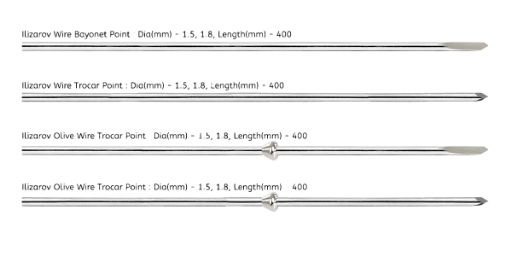E-mail iNfo@virkortho.shop Number +92-300-7477492

Intramedullary Pin (IM Pin)
Intramedullary Pin (IM Pin) Specification
Intramedullary Pin (IM Pin) insertion remains the most commonly performed procedure in orthopedic practice. Although its use for definitive fracture treatment has steadily declined due to advent of newer implants and devices, it still finds application in treatment in fractures suffered by medically unfit and pediatric patients and for providing interim traction in almost all lower limb injuries as well as hip and knee pathologies.
Intramedullary Pin (IM Pin) is composed of biocompatible materials such as stainless steel. They are smooth and cylindrical, with a sharp tip on one end and a hole or groove on the other.
Intramedullary Pin (IM Pin) Sizes
Intramedullary Pin (IM Pin) is a thin metal rod commonly used in orthopedic procedures for holding large bone fractures together. These pins function similarly to K Wire, but are larger in diameter.
Steinmann Pins are available in various Types, lengths and diameters.
Types: Single Trocar, Double Trocar, Single Trocar Threaded, Trocar & Threaded, Centre Threaded
Diameters: 1mm, 2mm, 2.5mm, 3mm, 3.5mm, 4mm, 4.5mm, 5mm, 5.5mm, 6mm, 6.5mm, 7mm and 8mm
Lengths: 100 mm to 300 mm
Intramedullary Pin (IM Pin) is indicated for use in the fixation of bone fractures, bone reconstruction, and as guide pins for insertion of other implant. The size of the Pin chosen should be adapted to the specific indication. Surgeon judgement is required to ensure a Pin is appropriate for the indication. There is a potential risk of Pin migration in some fracture fixation applications such as the clavicle.
Intramedullary Pin (IM Pin) indicated for use only in the following conditions:
Bone trauma requiring internal fixation for healing.
Fixation of soft tissue to bone where Pins are able to so do safely.
Bone lengthening and shortening procedures.
Osteotomies and other realignment procedures.
The Intramedullary Pin (IM Pin) is placed into the bone during a surgical operation using a pre-drilled hole. The pointed tip makes it easier to penetrate the bone, while the hole or groove on the other end allows for the attachment of external fixation devices such as traction devices or external fixators.
Depending on the surgical application, Intramedullary Pin (IM Pin) might be either temporary or permanent implants. Temporary pins are usually removed once the bone has healed and stabilised, whereas permanent pins can be maintained in place indefinitely.
Upper tibial Steinman pin insertion is required for most fractures around the hip joint and the femur. The insertion of a Steinman pin is a relatively safe procedure if the basic principles of insertion are adhered to. Complications like infection and pin loosening are quite common especially if the pins are retained for longer duration, which is rarely the scenario these days. Besides other complications like damage to ligaments & growth plate, pin cut through, major complications do occur like deep peroneal nerve palsy leading to foot drop, growth plate damage in children and pseudoaneurysm of anterior tibial artery.
About
Exceptional orthopedic instruments and implants from Pakistan.
Contact
Portfolio
© 2025 All rights reserved.
Location
Quick Link